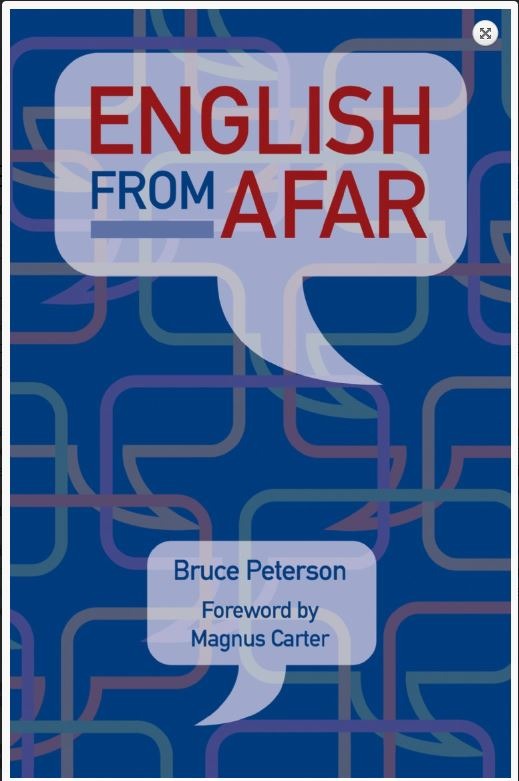Author: Bruce Paterson
Published by Matador
ISBN: 9781789013 566
Review by Steve Hirschhorn
English from Afar is an odd ball! It has around 150 pages divided into 2 parts having 35 Chapters with titles such as: ‘Why Learn English’, ‘What is Communication’, ‘Do We Need to be Perfect?’, ‘Working an Audience’ and so on.

It’s not a language learning book, it’s not designed to give advice to teachers, it’s not even a phrase book for learners, it’s something quite different and rather interestingly quirky! The author calls his book ‘a reference’ and notes that his approach to language learning focuses on the success of one’s communications rather than the syntactical accuracy or number of words a learner might have. In this, he is surely in line with many contemporary English language teachers.
Although Bruce Paterson describes this work as a reference, it’s difficult to pop in and out as one would expect with an actual reference book. It’s far too discursive, a story, a narrative, it’s ordered anarchy! I mean this in the nicest possible way; the fact is that once you start to read English from Afar, you’ll probably have to continue, rather like when reading a good novel, you’ll want to know where the author is going to take you next. In contrast, a reference book is something you pick up, look up and put down! The key really is that English from Afar has no list of references nor bibliography, and neither does it need them since it’s a book written from experience of life, professional know-how and a wealth of familiarity with all kinds of contexts.
Let’s take a chapter or two at random and see what awaits us therein.
The first chapter I arrived at is called ‘Inference’. It is a very short chapter indeed and promotes the notion that we need to learn to ‘infer’ when we meet an L2 term we don’t know and that indeed that’s what we do in L1 in any case. That we train ourselves to glean meaning from the context around previously unknown items seems to be good advice, something all learners can benefit from. For this reason, it might have been useful to offer some tips and tricks to guide learners on inference strategies. The logic required for inference to work combines with the confidence to allow oneself to take a risk and assume one is right while also seeking evidence for one’s inference later in the discourse, whether spoken or written. The author doesn’t touch on this and my feeling is that it might have been useful for readers to receive a little more direction in order to hone their skills.
The second chapter selected at random was Chapter 32, entitled: Humour. It is quite well known and perhaps axiomatic that using humour in an L2 is difficult and full of potential danger since there are cultural differences as well as the obvious difficulty of finding the right words! Bruce Paterson explains this admirably, even managing to work in a couple of amusing anecdotes as illustrations. He makes the valid points that using humour whether in L1 or L2 requires skill in terms of timing, linguistic aptitude and the ability to gauge one’s audience all of which should be managed with extreme care to avoid potential embarrassment and abject failure!
This almost uncategorisable work is well written, amusing, engaging and informative. My feeling is that teachers will enjoy it since it reflects much of what they encounter on a day to day basis; language learners will also enjoy it because it offers well established advice based on the author’s considerable experiences as a learner and teacher. As such, this book would make a great present and an amusing ‘hand-around’ for a school staff room.




